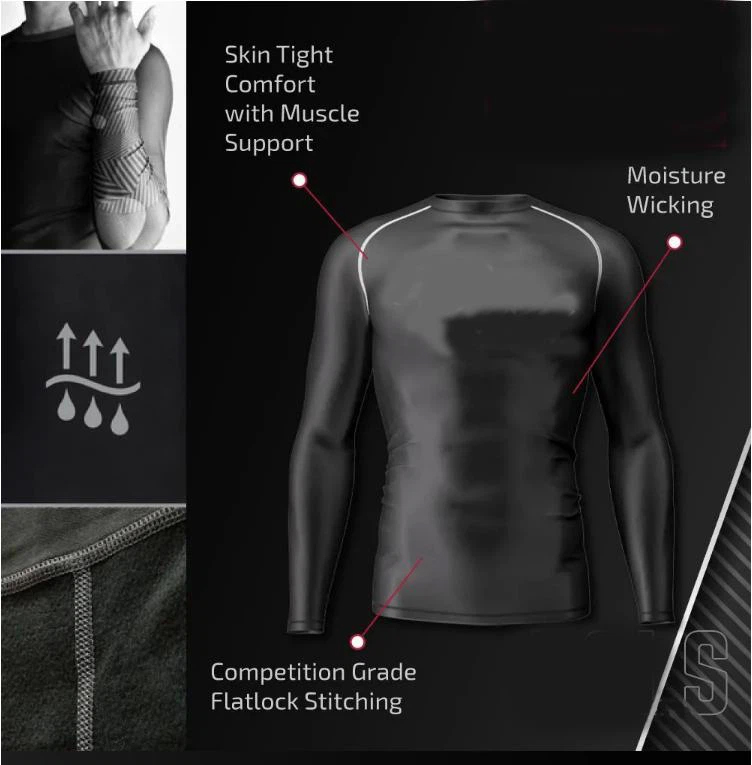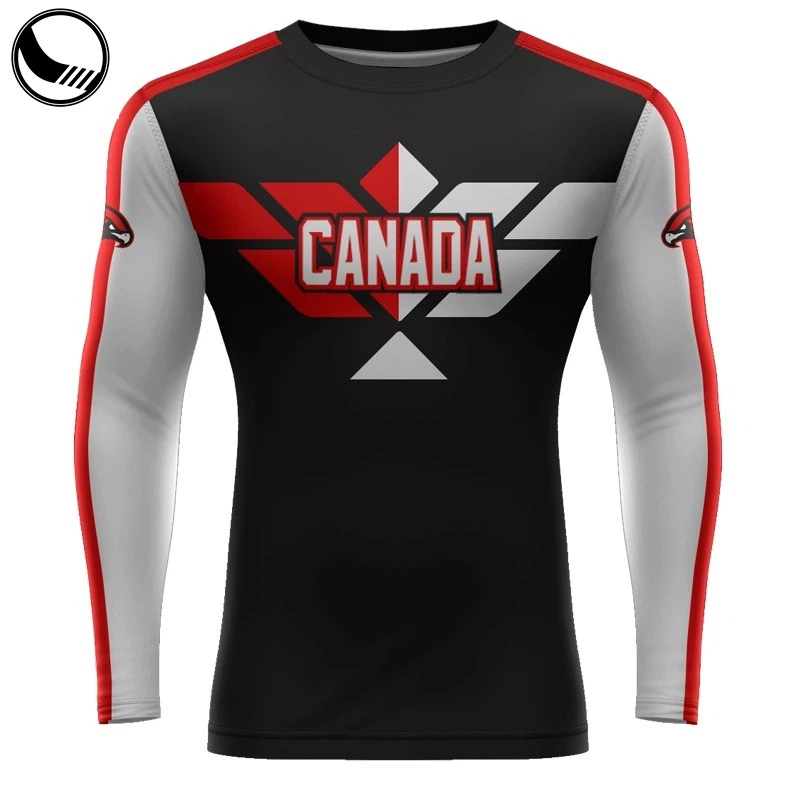Rash guards have become a popular piece of clothing among athletes, beach-goers, and outdoor enthusiasts in recent years. These shirts, originally designed for surfers, offer a wide range of benefits for anyone who enjoys spending time in the sun and water. In this article, we'll explore what rash guards are, their history, and why they're so popular today.
Product Type: | Short Sleeve RASH GUARD |
Fabric info: | 220gsm high quality super fine lycra fabric(UPF 50+ 85%polyester15%spandex) |
Technics: | Full sublimation printing |
Design info: | Custom logo on the pattern in any colos or any other custom design |
Size info: | Use our standard measurements or customize your own size charts |
Branding info: | Custom labels, drawstrings, hand tags and silicone bands are all available |
What are Rash Guards?
Rash guards are lightweight shirts made from a blend of materials such as polyester, spandex, and nylon. These materials are quick-drying, breathable, and have a UPF rating that protects the wearer from harmful UV rays. Rash guards were originally designed for surfers to protect them from skin irritation caused by the wax used on their surfboards. However, they have since become a popular choice for anyone who spends time in the water, including swimmers, divers, and snorkelers.

History of Rash Guards
The history of rash guards can be traced back to the 1970s when surfers began wearing them to prevent skin irritation caused by the wax on their surfboards. At the time, rash guards were made from a material called Lycra, which was stretchy and helped prevent chafing. As the popularity of surfing grew, so did the demand for rash guards. In the 1980s, a company called Body Glove began producing rash guards made from neoprene, the same material used to make wetsuits. These new rash guards provided more insulation and protection from the sun, which made them even more popular among surfers and other water sports enthusiasts.




